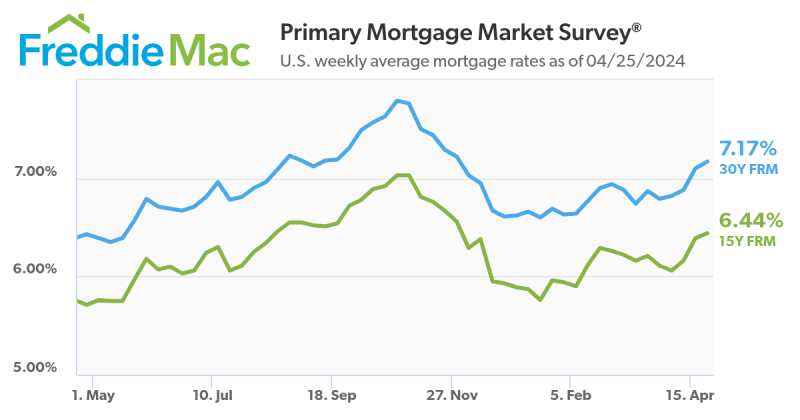Advertisement
Credit Plus enhances ScoreWizard
Residential mortgage delinquencies rise due to hurricane; loans in foreclosure fallMortgagePress.comHurricane Katrina,Rita,foreclosures
The third quarter 2005 National Delinquency Survey (NDS)
released by the Mortgage Bankers Association (MBA) shows that the
seasonally adjusted delinquency rate for mortgage loans on
single-family residential properties stood at 4.44 percent at the
end of the third quarter, down 10 basis points from the third
quarter of 2004, but up 10 basis points from the second quarter of
2005.
The increase in the third quarter delinquencies reflected the
impact of Hurricane Katrina, with higher delinquency rates in
Louisiana and Mississippi resulting from the destruction and
dislocation caused by the storm. Delinquencies for all loan types
were lower once the hurricane effects were eliminated from the
statistics. In that case, the total delinquency rate decreases 13
basis points, rather than increasing 10 basis points.
Total delinquencies increased in Louisiana from 6.67 percent to
24.63 percent between the end of June 2005 and the end of September
2005, and in Mississippi increased from 8.53 percent to 17.44
percent. The non-Katrina national percentages were calculated by
using second quarter numbers for Louisiana and Mississippi instead
of their third quarter numbers. The hurricane's impact will likely
result in higher delinquency rates and somewhat higher foreclosure
rates for at least the next few quarters.
The percentage of loans in the foreclosure process was 0.97
percent at the end of the third quarter, a drop of 19 basis points
from the previous year and a drop of three basis points from the
second quarter of 2005. The seasonally adjusted rate of loans
entering the foreclosure process was 0.41 percent in the third
quarter, up one basis point from the previous year and two basis
points from the second quarter of 2005. Katrina has not yet
impacted foreclosure percentages.
"Hurricane Katrina was the largest natural disaster this country
has faced in the last few generations, and obviously has had a
major effect on the local housing markets in Louisiana and
Mississippi. In addition, we have the impacts of Rita in Texas and
Louisiana and Wilma in Florida to consider. However, the overall
U.S. economy grew at almost 4.3 percent in annualized real terms
during the third quarter of 2005, adding 147,000 payroll jobs per
month," said Doug Duncan, MBA's chief economist and senior vice
president.
"The percentage of homeowners making their mortgage payments on
time is nearly 96 percent, although it is likely that rising
short-term rates will impact some borrowers with adjustable rates.
In addition, natural gas prices have roughly doubled from where
they were [during third quarter 2004]. That and the higher costs of
home heating oil are driving up home heating bills this winter and
will likely strain the ability of some borrowers to make their
mortgage payments," Duncan said.
This quarter's NDS results covered approximately 40.7 million
loans (30.7 million prime loans, 5.3 million sub-prime loans and
4.7 million government loans).
The seasonally adjusted (SA) delinquencies for adjustable-rate
mortgage (ARM) loans is up from 2004 and second quarter 2005,
whereas SA delinquencies are generally down for fixed-rate mortgage
(FRM) loans. Over one year, the SA delinquency rate for prime ARM
loans went up seven basis points (from 2.23 percent to 2.3
percent), while the percentage among prime FRM loans decreased four
basis points (from 2.15 percent to 2.11 percent). Since the third
quarter of 2004, the SA delinquency rate for sub-prime ARM loans
has increased 15 basis points (from 10.4 percent to 10.55 percent),
while the rate for sub-prime FRM loans dropped 141 basis points
(from 10.2 percent to 8.79 percent).
Since second quarter 2005, the SA delinquency rate for prime ARM
loans increased 11 basis points (from 2.19 percent to 2.3 percent),
whereas the rate for prime FRM loans increased nine basis points
(from 2.02 percent to 2.11 percent). Compared with second quarter
of 2005, the SA delinquency percentage among sub-prime ARM loans
increased 51 basis points (from 10.04 percent to 10.55 percent),
while the rate for sub-prime FRM loans decreased 27 basis points
(from 9.06 percent to 8.79 percent).
Since the third quarter of 2004, the SA delinquency rate
increased two basis points for prime loans (from 2.32 percent to
2.34 percent), two basis points for sub-prime loans (from 10.74
percent to 10.76 percent) and 51 basis points for FHA loans (from
12.24 percent to 12.75 percent) while decreasing 17 basis points
for VA loans (from 7.29 percent to 7.12 percent). Since the second
quarter of 2005, the SA delinquency rate increased for all loan
types—14 basis points for prime loans, 43 basis points for
sub-prime loans, 38 basis points for FHA loans and 21 basis points
for VA loans.
The foreclosure inventory percentage decreased for all loan
types over the year—seven basis points for prime loans (from
0.48 percent to 0.41 percent), 56 basis points for sub-prime loans
(from 3.87 percent to 3.31 percent), 59 basis points for FHA loans
(from 2.84 percent to 2.25 percent) and 41 basis points for VA
loans (from 1.60 percent to 1.19 percent). In addition, the
foreclosure inventory percentage declined from last quarter among
all loan types except for sub-prime, which went down one basis
point for prime loans, four basis points for FHA loans and six
basis points for VA loans, and went up two basis points for
sub-prime loans.
Over the last year, the SA percentage of new foreclosures was
down 10 basis points for FHA loans (from 0.98 percent to 0.88
percent) and 12 basis points for VA loans (from 0.51 percent to
0.39 percent), while the percentage increased four basis points for
sub-prime loans (from 1.35 percent to 1.39 percent) and remained
unchanged among prime loans (0.18 percent). Since the last quarter,
the percent of new foreclosures increased 13 basis points for
sub-prime loans and 12 basis points for FHA loans while remaining
unchanged for prime loans and VA loans.
The seriously delinquent rate, defined as the non-seasonally
adjusted percentage of loans that are 90 days or more delinquent or
in the process of foreclosure, was down from last year and last
quarter. This measure conforms to a number of standard definitions
and is designed to account for inter-company differences on when a
loan enters the foreclosure process. In the third quarter of 2005,
the percent of loans that were seriously delinquent was 1.82
percent, 20 basis points lower than third quarter of 2004 and one
basis point lower than second quarter 2005.
For more information, visit www.mortgagebankers.org.
About the author





